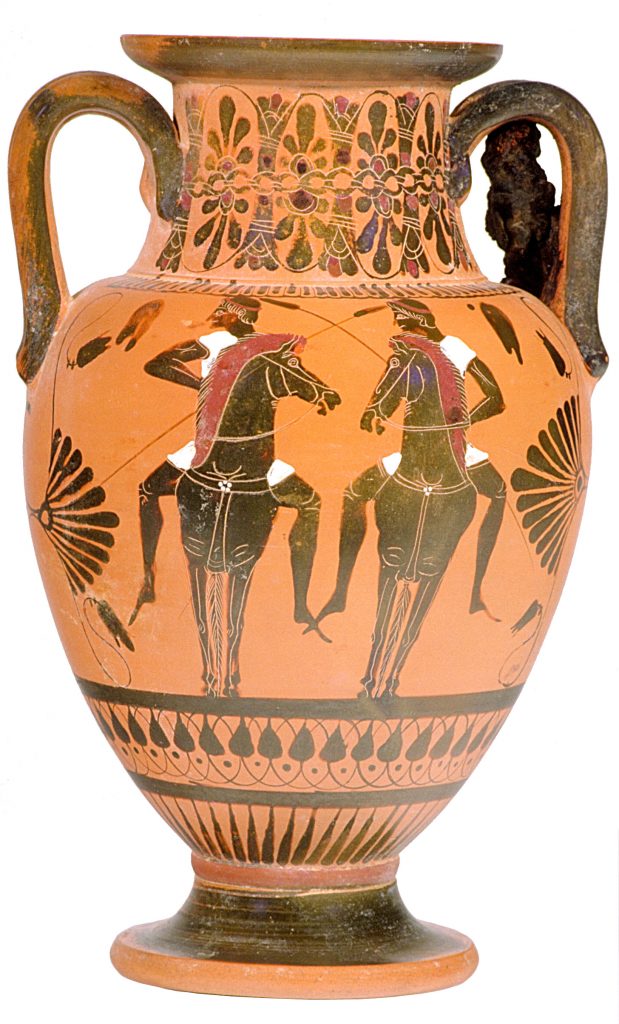From the Neolithic period onwards, the ancient Greeks made pots in a variety of
different styles.
The most characteristic styles of pottery being black-figure and red-figure.
In black-figure, the figures are painted using a slip that becomes black through the firing process. Red-figure is the reverse: the background of the image is filled in first, but the figures are left blank with details added using fine brushes.
The red-figure technique developed around 525 BCE and eventually replaced the older black-figure technique.

The various pots were used for a variety of functions such as religious vessels, meals and feasts, drinking rituals and so on. The general assumption was that pots like these were only used or owned by wealthier members of society however, there is evidence that the upper echelons of society probably used metal vessels. It has been suggested that the shapes of the black and red-figure vessels were modelled largely after more valuable vessels made form silver and other metals.
The clay (keramos) used to make these pots was generally of high quality, relatively fine and pure. The potter shaped the vessel on a potter’s wheel.
The Greek potter’s wheel was low to the ground and spun around by an assistant. Larger vessels, such as cooking pots were shaped by hand and made from a coarse clay. After the basic shape was modelled, handles and other decorative elements were added. The vessel was later polished using a damp cloth to smooth the surface.
The clay used to make Attic vessels is what is known as secondary clay. That is, clay that has been transported from its original source by rivers and rain, and deposited. As it is transported, the clay incorporates other materials, most importantly iron. It is the iron content in the clay that gives Attic pottery its rich red colour. In contrast, Corinthian clay is much creamier in colour.
To ‘paint’ the vessels, the Greeks used a fine clay slip made from the same clay as the pot. The slip contains ferric oxide, which is red in colour, but when fired in an environment with little oxygen it becomes black. Attic pottery was fired in three stages: an oxidising stage (when the clay slip turned red), a reducing stage (that turned the clay slip black and hardened it), the final stage was another oxidising stage to finish the process.

The kiln temperature never exceeded 950 degrees Celsius, this goes some way to explaining the relative ‘softness’ of Greek pottery compared to modern chinaware. This difference can be demonstrated: if you drop a sherd of Attic red-figure on a table, it will make a ringing sound, whereas a sherd from a normal coarse cooking pot will sound dull when dropped on a hard surface.
The process may appear simple to modern eyes, yet it required a great deal of knowledge and expertise to execute successfully. There are even examples in museum of Attic red-figure vases that had been misfired: parts of the pots had turned a dull grey colour instead of the striking red/black contrast.
The Hellenic Museum has a variety of black and red-figure pottery on display and is open to the public 10-4, 7 days a week.













